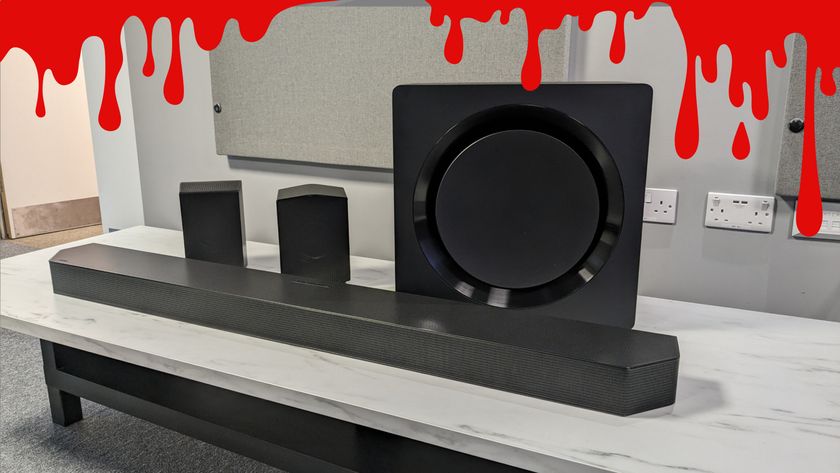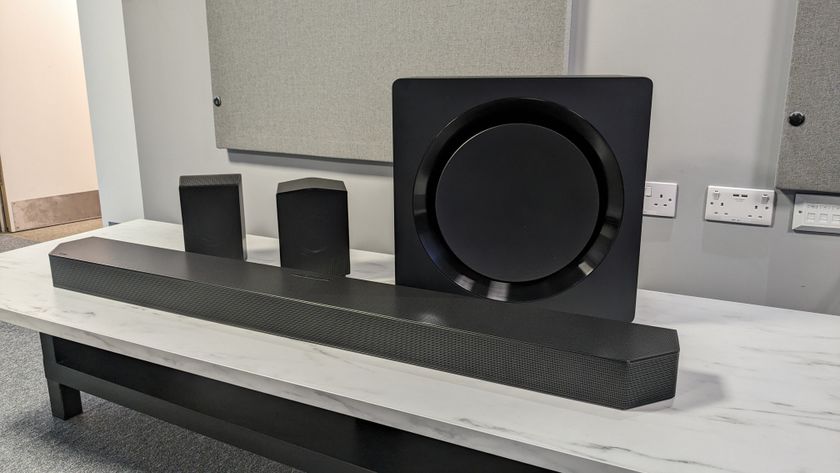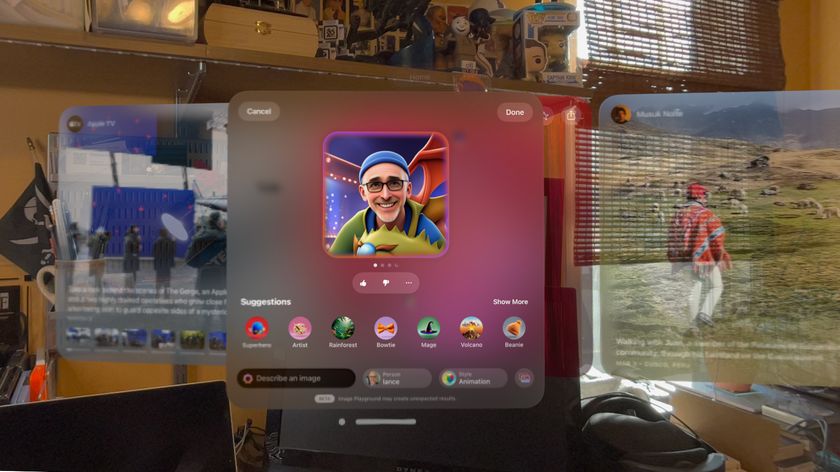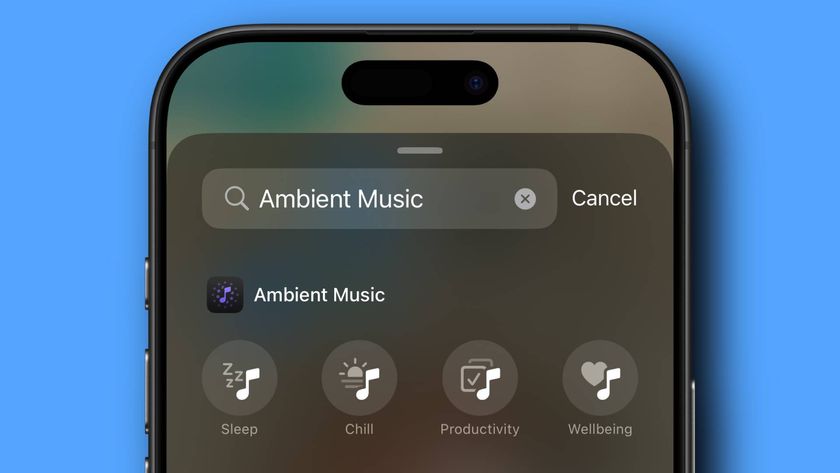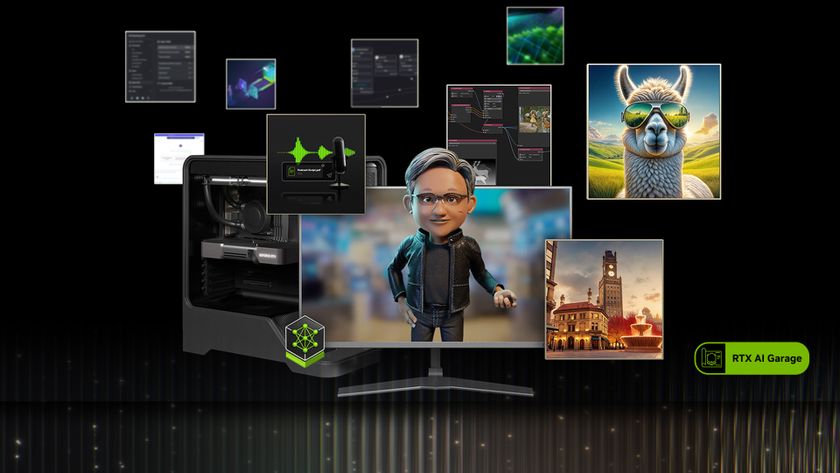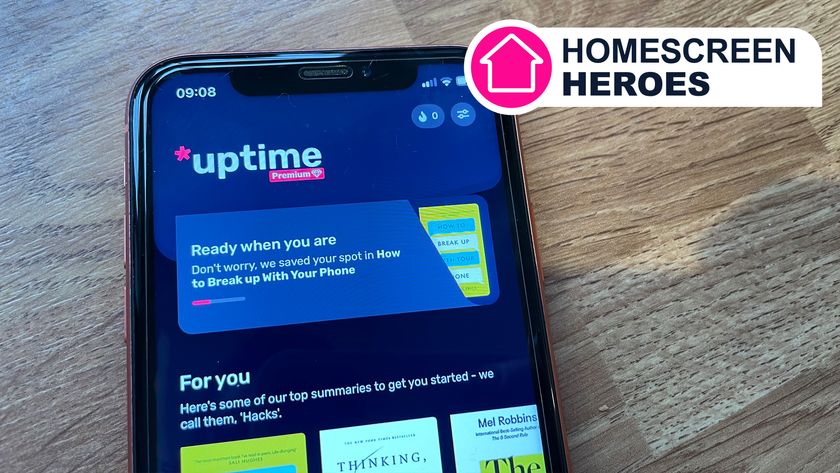I heard Philips' super-small new Dolby Atmos soundbar, and the sound is way bigger than I imagined
Minimal soundbar, maximal sound
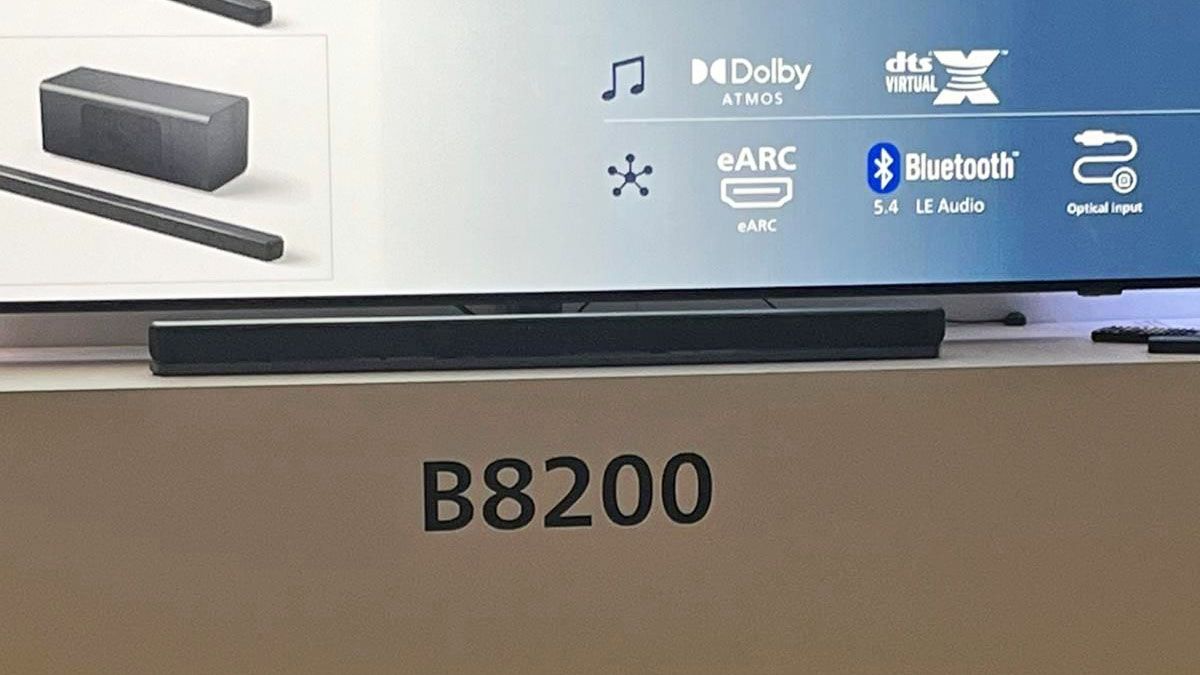
Philips just announced a new range of soundbars for 2025 that are all very practical – all are designed to solve some kind of space problem with the way soundbars fit next to TVs. One of them is the Philips TAB8200, which is a very slim soundbar (just 37mm high, and not much deeper) that's also pretty compact in width so that it can fit under the screen and between the feet of even low-slung TVs – it's a follow-up to the Philips TAB6309, but even more compact.
It has a long and thin dual-driver subwoofer to match, which can be used upright in spaces where you need it to have a small footprint to fit in, or it can lie flat to sit under furniture.
Both units look like they shouldn't be able to kick out much sound – so I was genuinely amazed by the scale of good-quality audio they produce together.
It's just a 2.1 system, with four drivers in the soundbar (each channel pairs a 2.25-inch racetrack mid-range driver with a 19mm tweeter), and the dual bass drivers in the sub – so while it supports Dolby Atmos and DTS:X, don't expect much in the way of 3D sound.
The bar isn't even really trying for virtual effects, which seems wise to me, though there should be a bit of positional sound matching the motion on-screen – standard stereo stuff.
But my goodness, does it punch like it's a bigger soundbar. It's 160W of total RMS power, of which 100W is in the sub. The end result is really meaty and impactful bass, and it seemed to be well-balanced and with a good crossover to the bar in my short demo. The bar produced mid-range sound that had no problem expressing texture away from the bass tones.
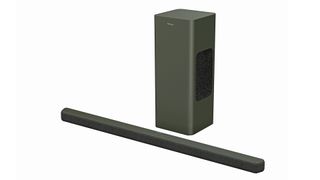
I've tried slim soundbars in the past that had issues with mid-range oomph, and I've tried Philips soundbars in the past with imperfect frequency crossover between the sub and the bar – but from my short time with it, this seemed to dodge those pitfalls, perhaps by being sensible and just focusing on 2.1 channels.
Get daily insight, inspiration and deals in your inbox
Sign up for breaking news, reviews, opinion, top tech deals, and more.
The scale of the sound felt like more than enough for a 55-inch TV, but there's a lot I'd need to dig into during a full test before I can truly recommend it among the best soundbars: dialogue is obviously a potential pitfall, it wasn't clear how strong the dynamic response is, and I'd need to see if the balance holds up at lower volumes.
But with a price of €299 (about $310 / £250), it looks like it could be excellent value, and I'm looking forward to comparing it to the options in our list of the best cheap soundbars when it arrives in August 2025. It's confirmed for a UK and European release, but I've asked Philips to confirm if it'll get a US launch as well and will update when I hear back.
You might also like…
- I test soundbars for a living, and these 4 affordable models are a great audio upgrade for your Super Bowl Sunday
- Looks like the Sonos Arc soundbar is being discontinued, and I hope Sonos is making space for something new
- This cheap Dolby Atmos soundbar splits into 3 speakers, and has its own Philips Hue-style LED lights too

Matt is TechRadar's Managing Editor for Entertainment, meaning he's in charge of persuading our team of writers and reviewers to watch the latest TV shows and movies on gorgeous TVs and listen to fantastic speakers and headphones. It's a tough task, as you can imagine. Matt has over a decade of experience in tech publishing, and previously ran the TV & audio coverage for our colleagues at T3.com, and before that he edited T3 magazine. During his career, he's also contributed to places as varied as Creative Bloq, PC Gamer, PetsRadar, MacLife, and Edge. TV and movie nerdism is his speciality, and he goes to the cinema three times a week. He's always happy to explain the virtues of Dolby Vision over a drink, but he might need to use props, like he's explaining the offside rule.
You must confirm your public display name before commenting
Please logout and then login again, you will then be prompted to enter your display name.
